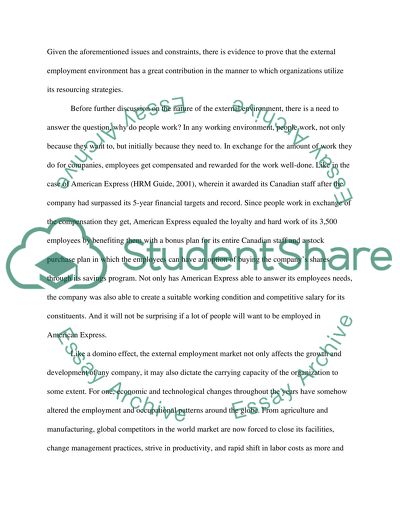Cite this document
(“To what degree are resourcing stragegies constrained by the nature of Essay”, n.d.)
To what degree are resourcing stragegies constrained by the nature of Essay. Retrieved from https://studentshare.org/miscellaneous/1537523-to-what-degree-are-resourcing-stragegies-constrained-by-the-nature-of-the-external-employement-market-and-how-can-the-human-resources-function-respond-to-these
To what degree are resourcing stragegies constrained by the nature of Essay. Retrieved from https://studentshare.org/miscellaneous/1537523-to-what-degree-are-resourcing-stragegies-constrained-by-the-nature-of-the-external-employement-market-and-how-can-the-human-resources-function-respond-to-these
(To What Degree Are Resourcing Stragegies Constrained by the Nature of Essay)
To What Degree Are Resourcing Stragegies Constrained by the Nature of Essay. https://studentshare.org/miscellaneous/1537523-to-what-degree-are-resourcing-stragegies-constrained-by-the-nature-of-the-external-employement-market-and-how-can-the-human-resources-function-respond-to-these.
To What Degree Are Resourcing Stragegies Constrained by the Nature of Essay. https://studentshare.org/miscellaneous/1537523-to-what-degree-are-resourcing-stragegies-constrained-by-the-nature-of-the-external-employement-market-and-how-can-the-human-resources-function-respond-to-these.
“To What Degree Are Resourcing Stragegies Constrained by the Nature of Essay”, n.d. https://studentshare.org/miscellaneous/1537523-to-what-degree-are-resourcing-stragegies-constrained-by-the-nature-of-the-external-employement-market-and-how-can-the-human-resources-function-respond-to-these.


